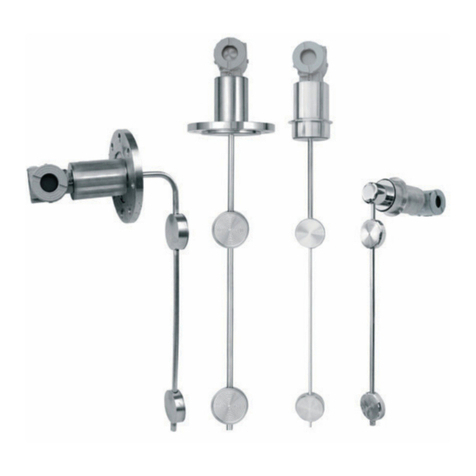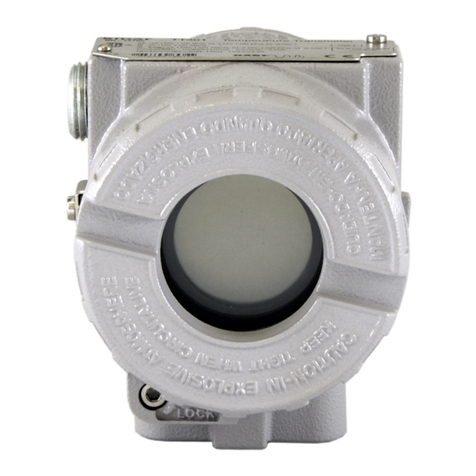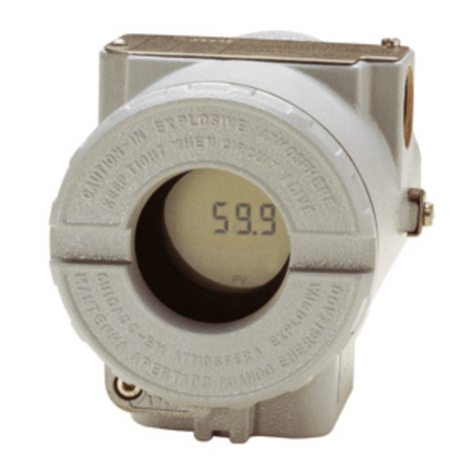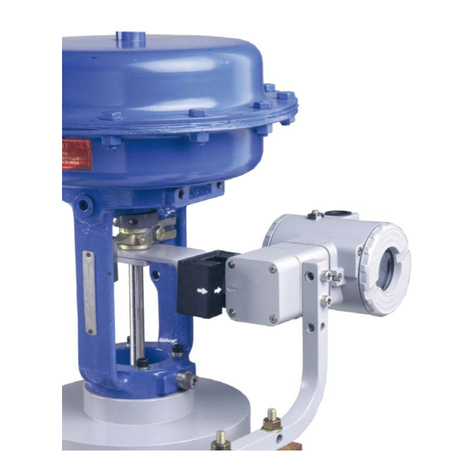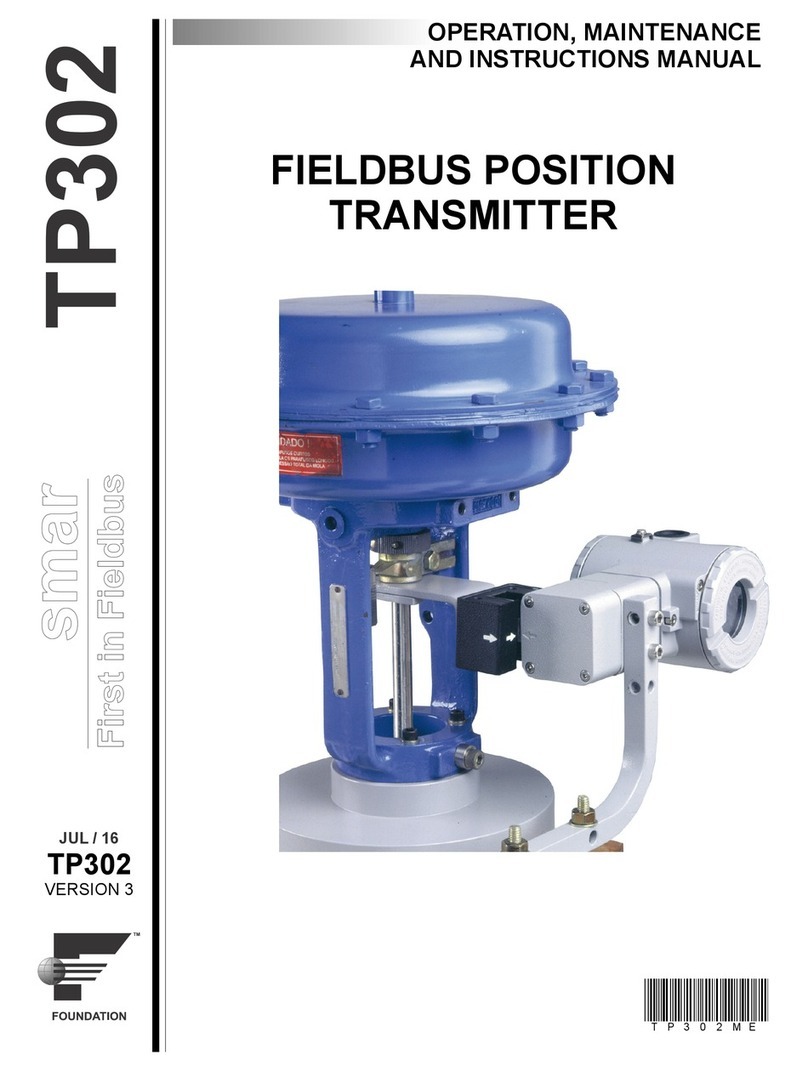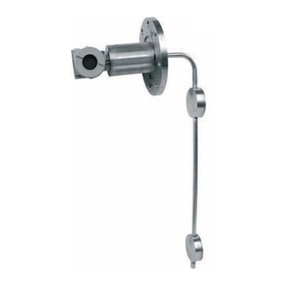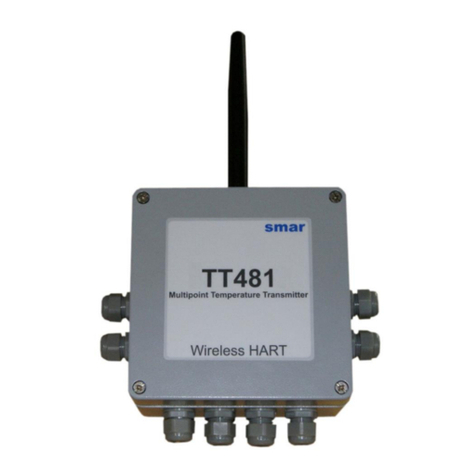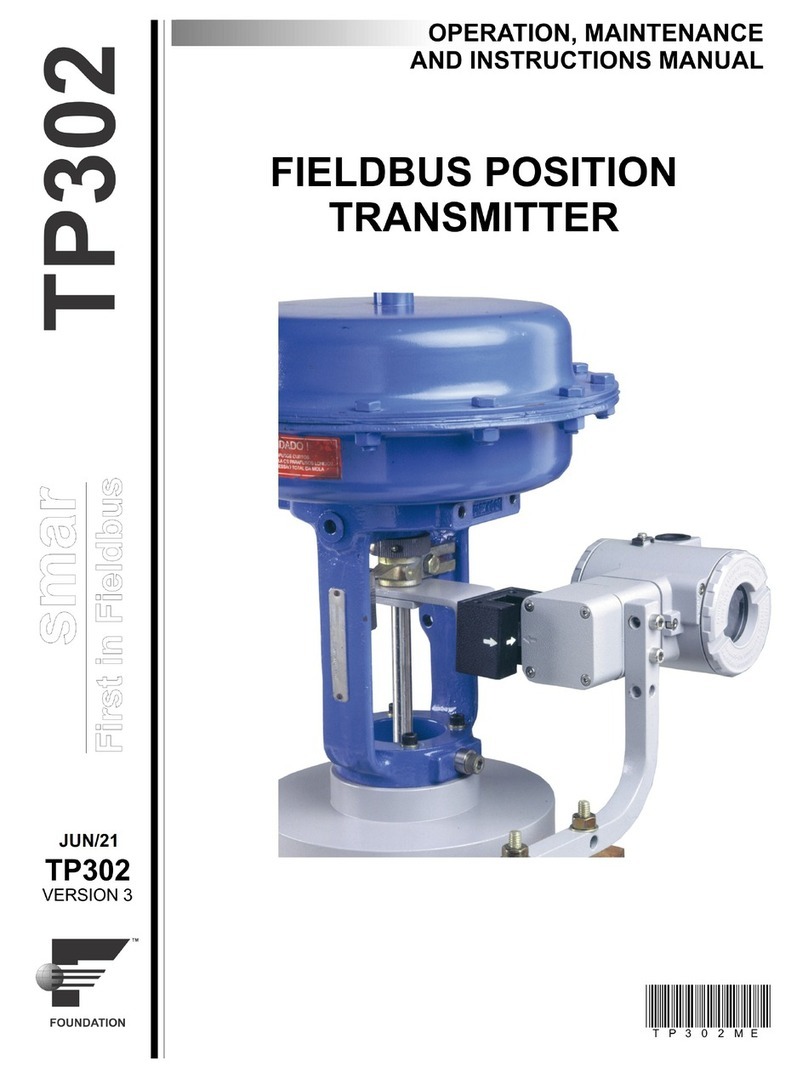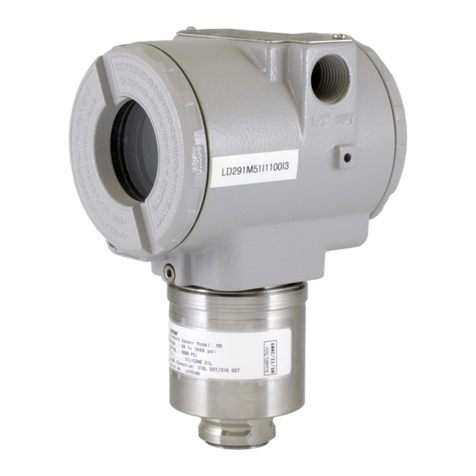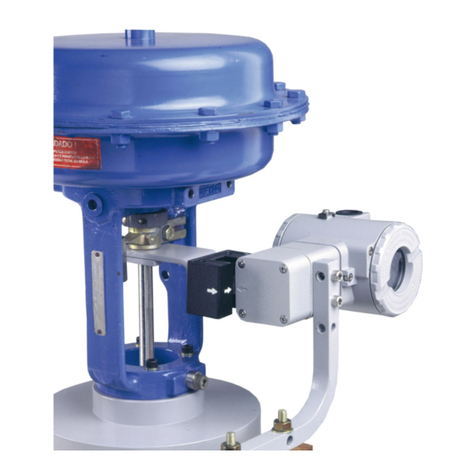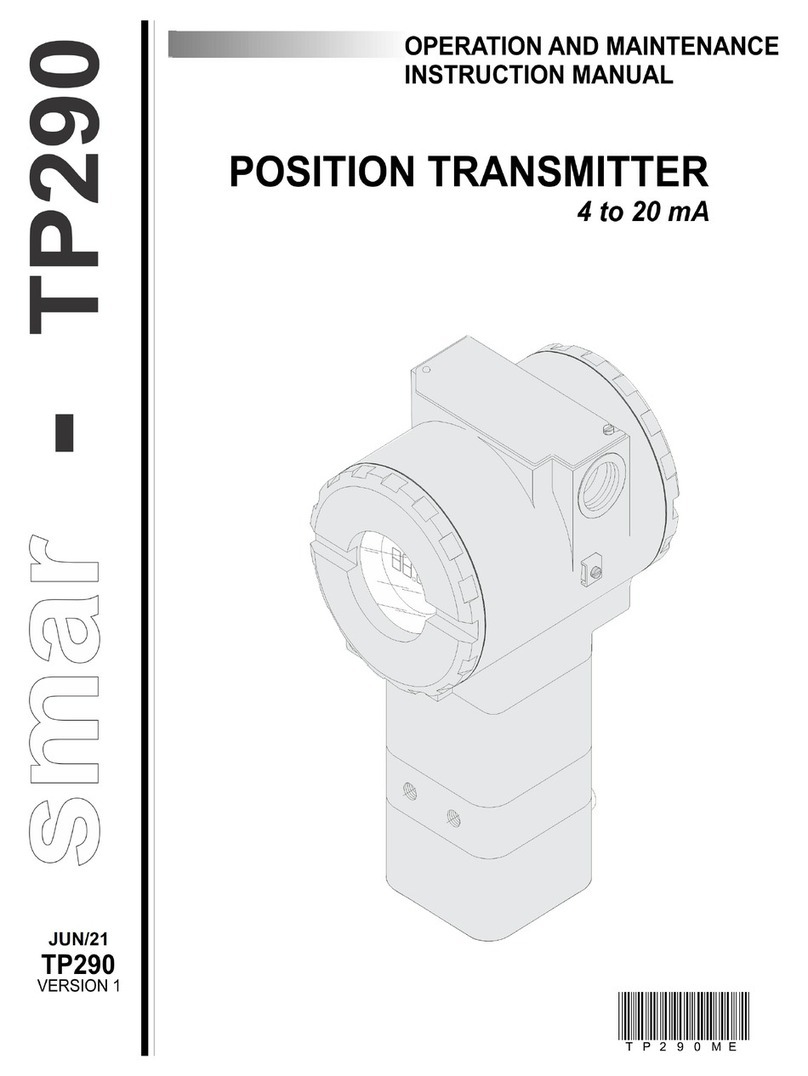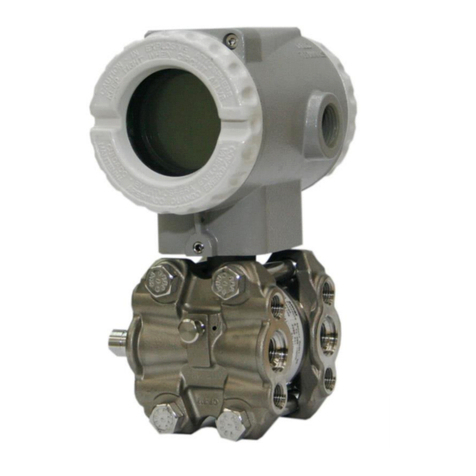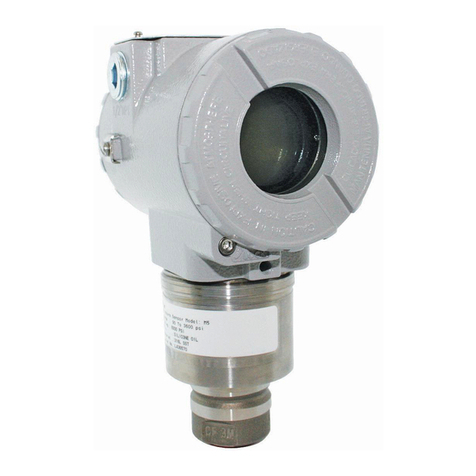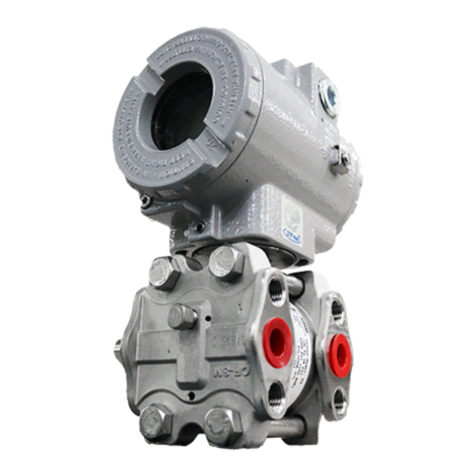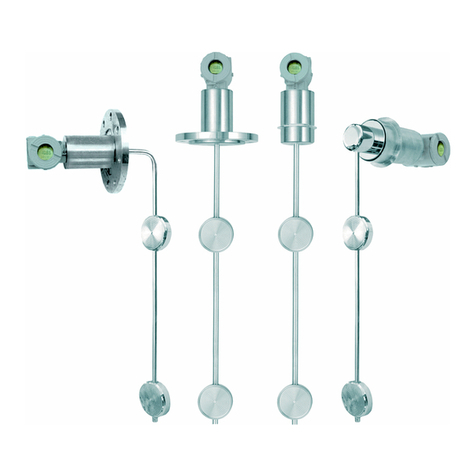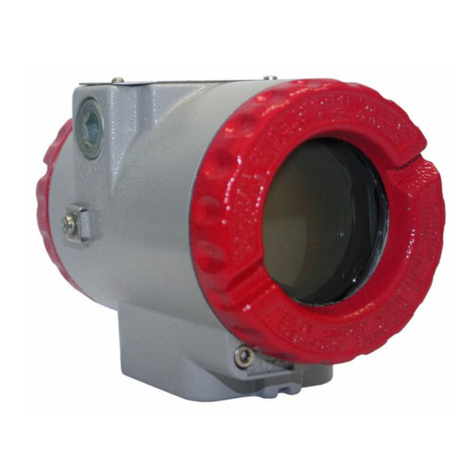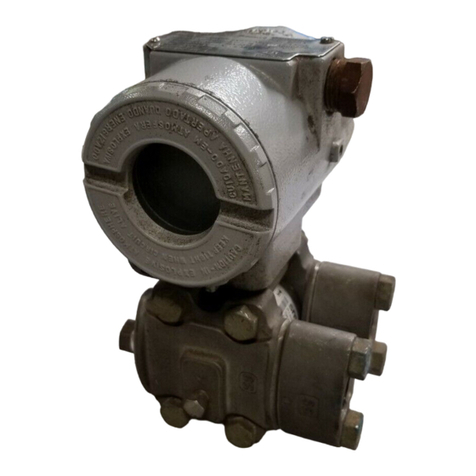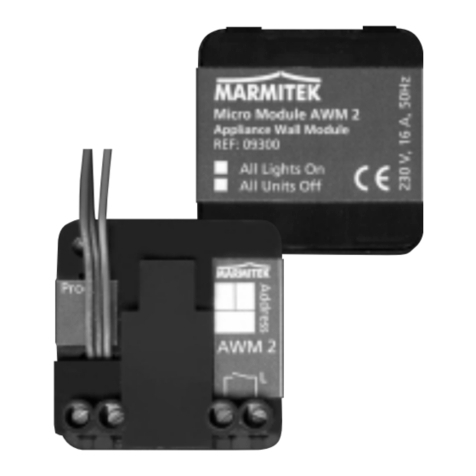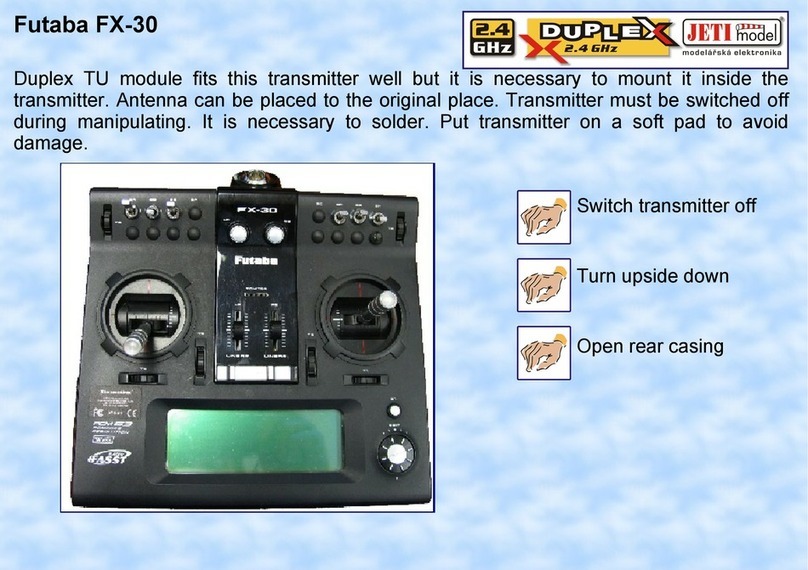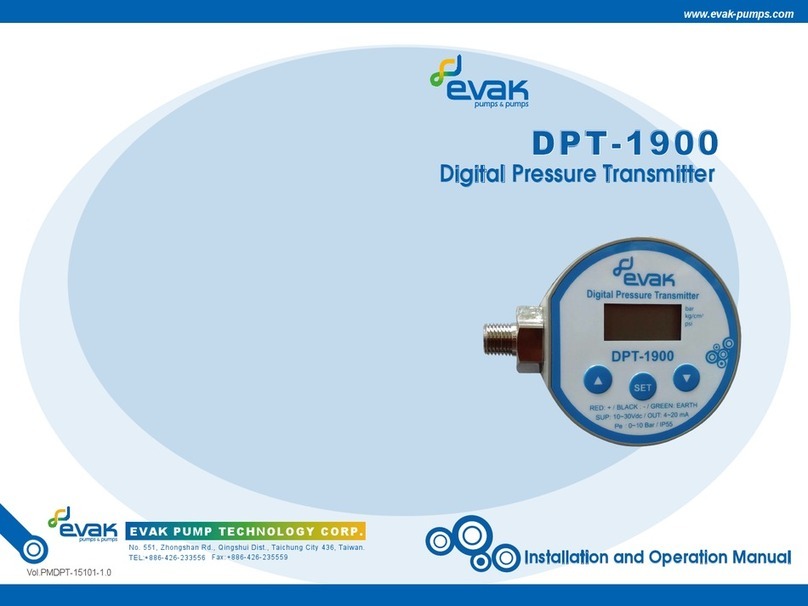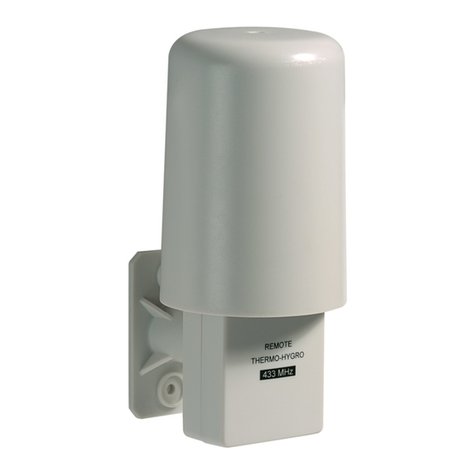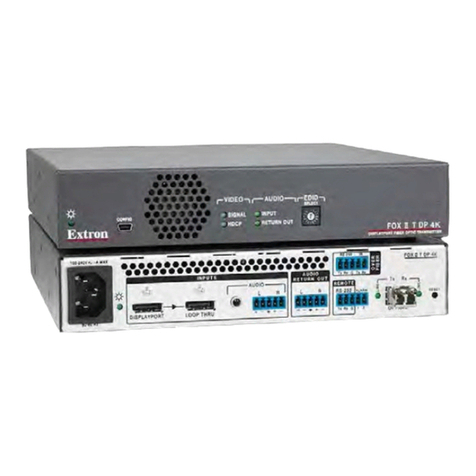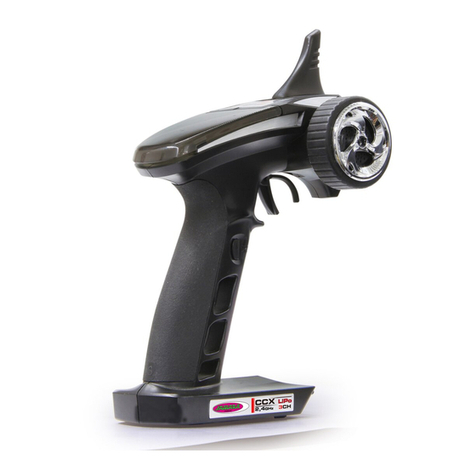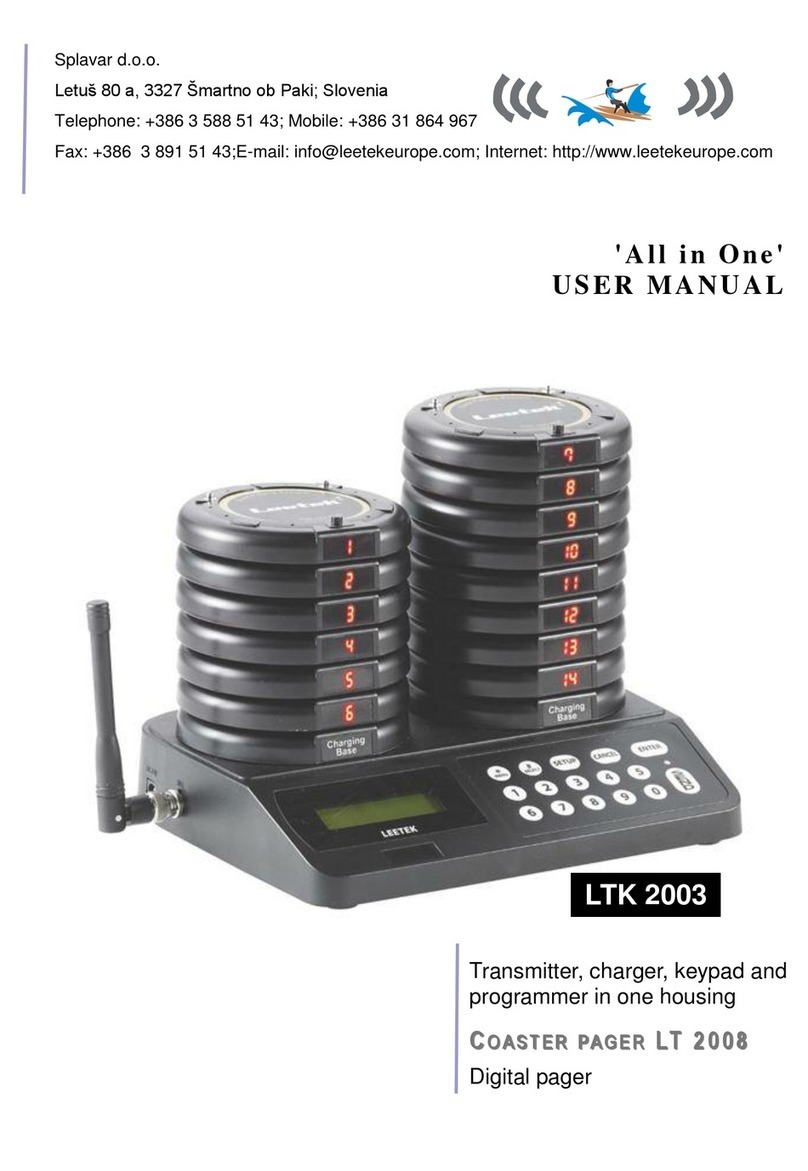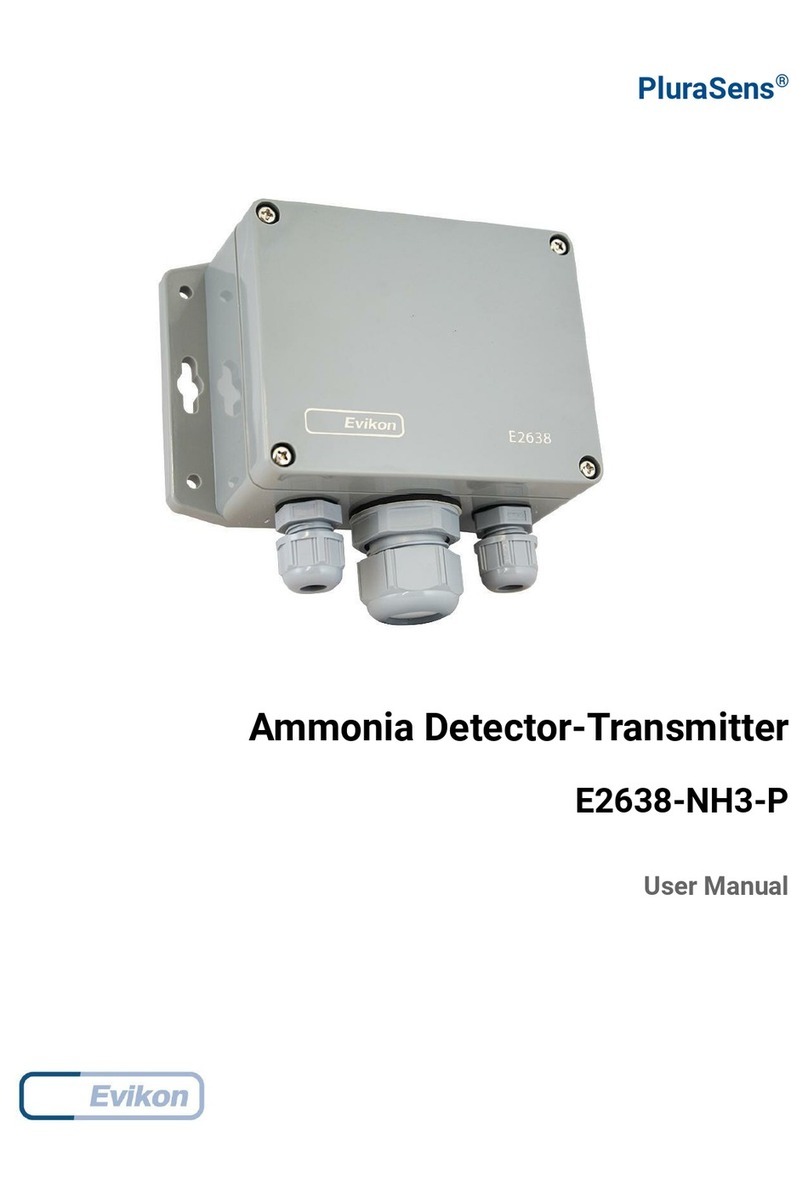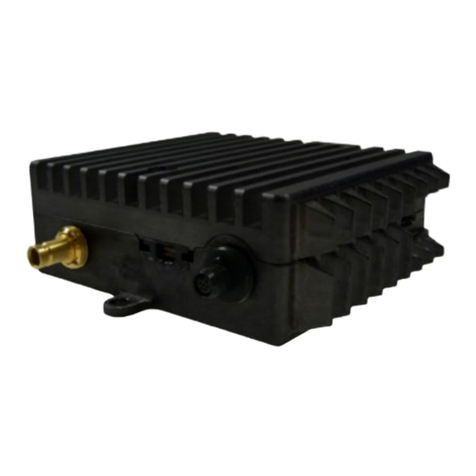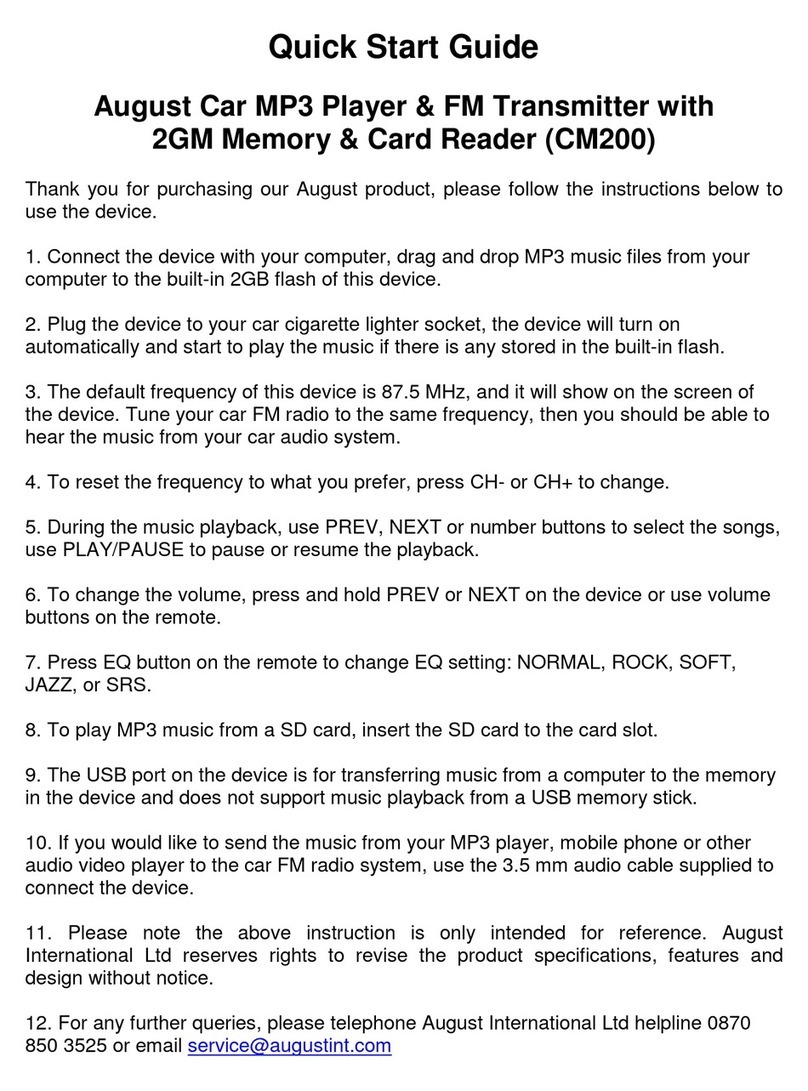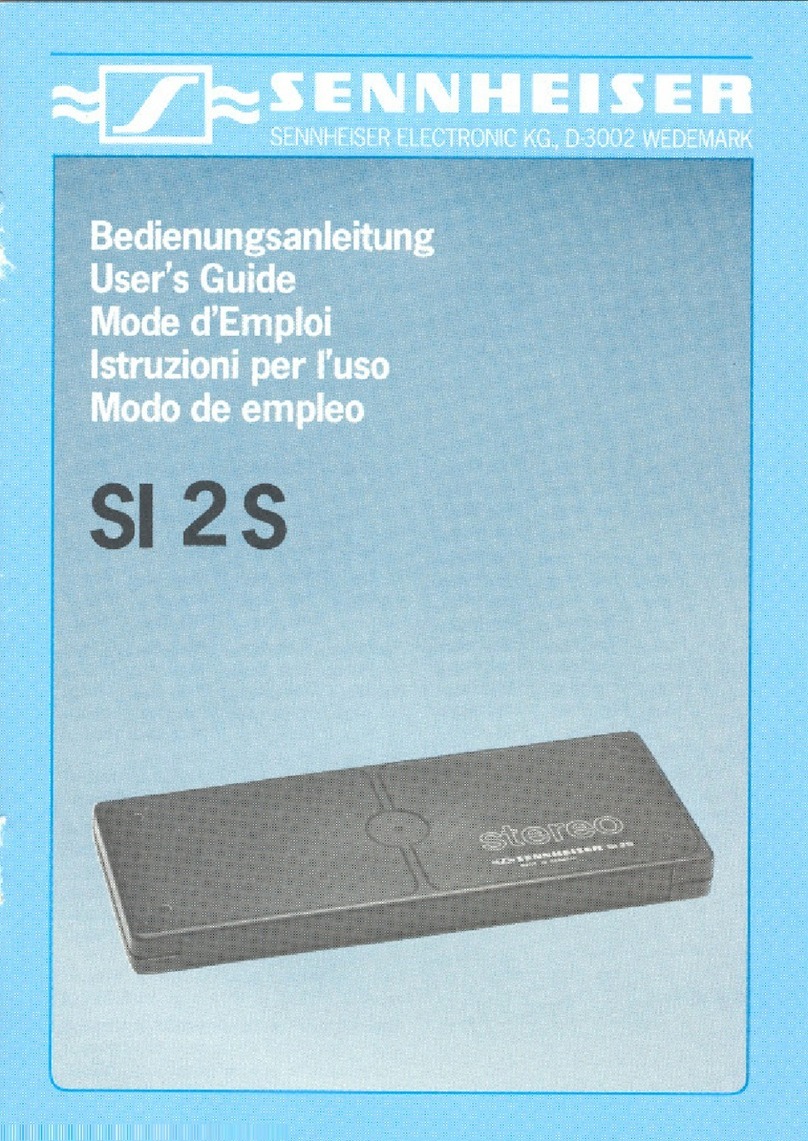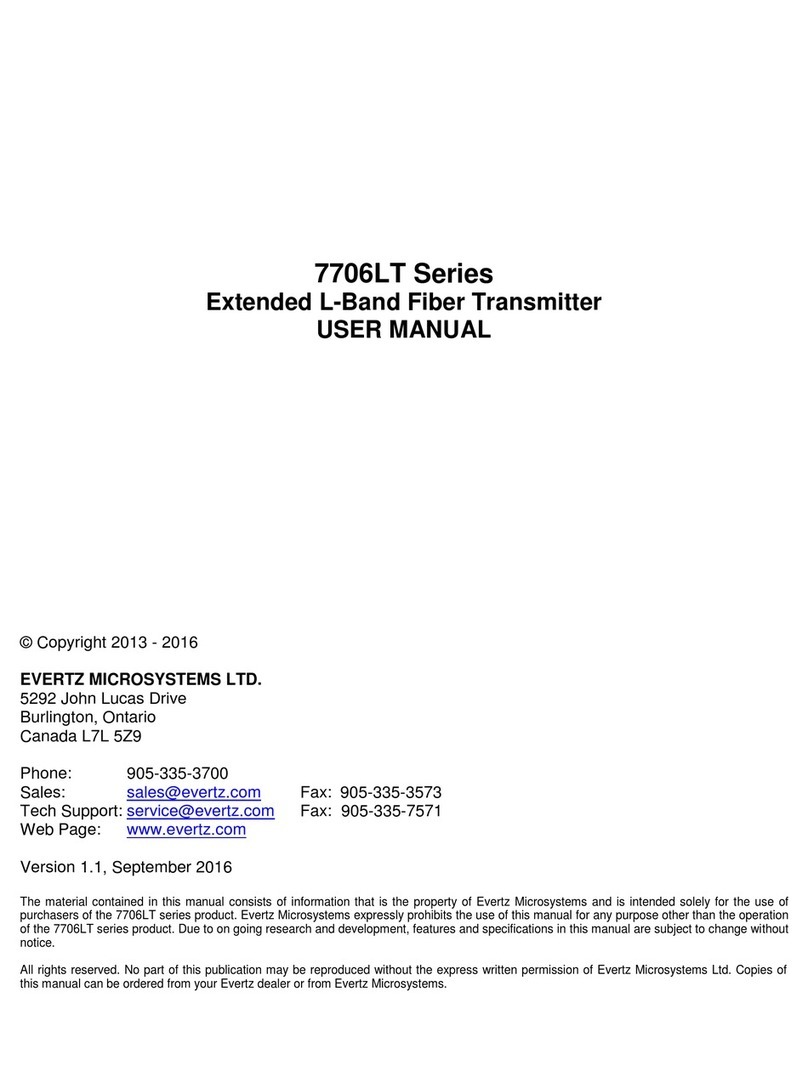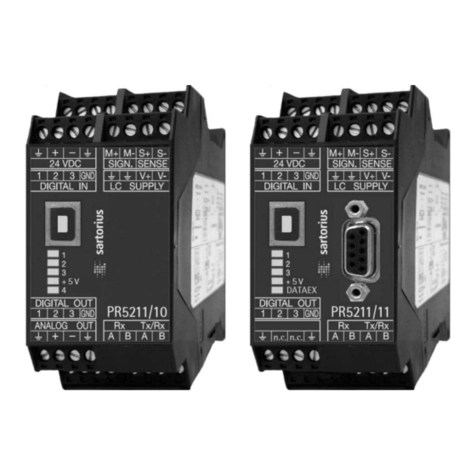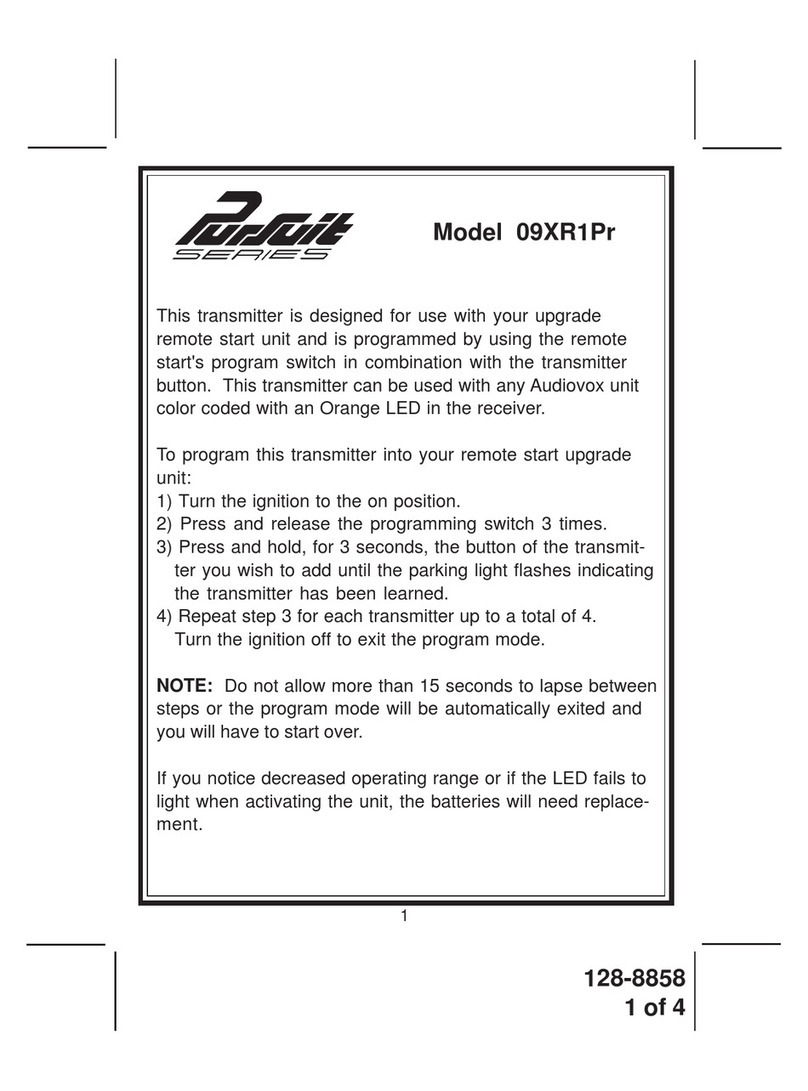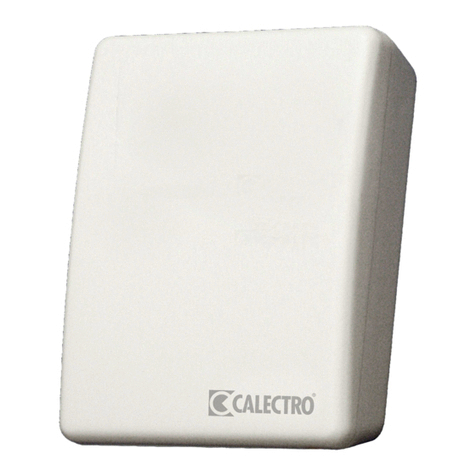SMAR LD302 Manual


Specifications and information are subject to change without notice.
May/99
BRAZIL
Smar Equipamentos Ind. Ltda.
Av. Dr. Antonio Furlan Jr., 1028
Sertãozinho SP 14160-000
Tel.: +55 16 645-6455
Fax: +55 16 645-6450
CHINA
Smar China Corp.
3 Baishiqiao Road, Suite 30233
Beijing 100873, P.R.C.
Tel.: +86 10 6849-8643
Fax: +86 10 6849-9549
FRANCE
Smar France S. A. R. L.
1, bld de l'Oise
Immeuble Les Maradas
95031 Cergy – Pontoise
Tel.: +33 1 30 38-3888
Fax: +33 1 30 38-4110
GERMANY
Smar GmbH
Robert-Koch-Strasse 35
D 55129 Mainz
Tel.: +49 6131 582037
Fax: +49 6131 582249
MEXICO
Smar Mexico
11, Poniente, No. 1314-1 PB
Col. Centro C. P. 72000
Ciudad de Puebla, Puebla
Tel.: +52 22 46-4386
Fax: +52 22 46-4386
NORWAY
Smar Norge A/S
Sandviksveien, 18
N-5035 Sandviken Bergen
Tel.: +47 55 13-3885
Fax: +47 55 13-3886
SINGAPORE
Smar Singapore Pte. Ltd.
315 Outram Road
#04-05, Tan Boon Liat Building
Singapore 169074
Tel.: +65 324-0182
Fax: +65 324-0183
USA
Smar International Corporation
Northwest Point Service Center
7240 Brittmoore, Suite 118
Houston, TX 77041
Tel.: +1 713 849-2021
Fax: +1 713 849-2022
Smar Laboratories Corporation
10960 Millridge North, Suite 107
Houston, TX 77070
Tel.: +1 281 807-1501
Fax: +1 281 807-1506
Smar Research Corporation
4250 Veterans Memorial Hwy.
Unit 156
Holbrook , NY 11741
Tel.: +1 516 737-3111
Fax: +1 516 737-3892


Index
III
Table of Contents
TABLE OF CONTENTS.................................................................................III
INDEX OF FIGURES .................................................................................... IV
INDEX OF TABLES ...................................................................................... IV
INTRODUCTION ........................................................................................... V
INSTALLATION ...........................................................................................1.1
GENERAL ............................................................................................................................... 1.1
HOUSING ROTATION............................................................................................................ 1.5
BUS TOPOLOGY AND NETWORK CONFIGURATION ........................................................ 1.6
OPERATION................................................................................................2.1
FUNCTIONAL DESCRIPTION – SENSOR ............................................................................ 2.1
FUNCTIONAL DESCRIPTION – ELETRONICS..................................................................... 2.2
CONFIGURATION.......................................................................................3.1
TRANSDUCER BLOCK .......................................................................................................... 3.1
HOW CONFIGURE A TRANSDUCER BLOCK ...................................................................... 3.1
LOWER AND UPPER TRIM ................................................................................................... 3.2
PRESSURE TRIM – LD302 .................................................................................................... 3.3
VIA LOCAL ADJUSTMENT .................................................................................................... 3.5
CHARACTERIZATION TRIM.................................................................................................. 3.6
SENSPOR INFORMATION ................................................................................................... 3.8
TEMPERATURE TRIM ........................................................................................................... 3.8
SENSOR DATA READING ..................................................................................................... 3.9
TRANSDUCER DISPLAY – CONFIGURATION................................................................... 3.10
DISPLAY TRANDUCER BLOCK .......................................................................................... 3.10
DEFINITION OF PARAMETERS AND VALUES .................................................................. 3.11
PROGRAMING USING LOCAL ADJUSTMENT .................................................................. 3.14
MAINTENANCE PROCEDURES ................................................................4.1
DISASSEMBLY PROCEDURE............................................................................................... 4.1
SENSOR CLEANING ............................................................................................................. 4.1
ELECTRONIC CIRCUIT ........................................................................................................ 4.2
REASSEMBLE PROCEDURE................................................................................................ 4.2
SENSOR MOUNTING ............................................................................................................ 4.2
ELECTRONIC CIRCUIT ......................................................................................................... 4.2
REASSEMBLE PROCEDURE................................................................................................ 4.2
SENSOR MOUNTING ............................................................................................................ 4.2
ELECTRONIC CIRCUIT ......................................................................................................... 4.4
INTERCHANGEABILITY......................................................................................................... 4.4
UPGRADING LD301 TO LD302 ............................................................................................. 4.5
RETURNING MATERIALS ..................................................................................................... 4.5
TECHNICAL CHARACTERISTICS..............................................................5.1
FUNCTIONAL SPECIFICATIONS .......................................................................................... 5.1
PERFORMANCE SPECIFICATIONS ..................................................................................... 5.2
PHYSICAL SPECIFICATIONS ............................................................................................... 5.3

LD302 – Operation and Maintenance Instruction Manual
IV
Index of Figures
FIGURE 1.1 – DIMENSIONAL DRAWING AND MOUNTING POSITION FOR LD302 ............... 1.3
FIGURE 1.2 – POSITION OF THE TRANSMITTER AND TAPS ................................................. 1.4
FIGURE 1.3 – HOUSING ROTATION SET SCREW ................................................................... 1.5
FIGURE 1.4 – TERMINAL BLOCK............................................................................................... 1.5
FIGURE 1.5 – BUS TOPOLOGY ................................................................................................. 1.7
FIGURE 1.6 – TREE TOPOLOGY ............................................................................................... 1.7
FIGURE 2.1 – CAPACITIVE CELL............................................................................................... 2.1
FIGURE 2.2 – LD302 BLOCK DIAGRAM HARDWARE .............................................................. 2.2
FIGURE 2.3 – LCD INDICATOR ................................................................................................. 2.3
FIGURE 3.1 – FUNCTION AND TRANSDUCER BLOCKS ......................................................... 3.2
FIGURE 3.2 – LD302 SYSCON – TRANSDUCER CONFIGURATION SECREEN..................... 3.3
FIGURE 3.3 – LD302 SYSCON - TRANSDUCER CONFIGURATION SECREEN ..................... 3.4
FIGURE 3.4 – LD302 SYSCON - TRANSDUCER CONFIGURATION SECREEN ..................... 3.4
FIGURE 3.5 – LD302 SYSCON - TRANSDUCER CONFIGURATION SECREEN ..................... 3.7
FIGURE 3.6 – THE CARACTERIZATION CURVE CONFIGURATION ....................................... 3.7
FIGURE 3.7 – TRANDUCER BLOCK – SENSOR INFORMATION............................................. 3.8
FIGURE 3.8 – THE TEMPERATURE TRIM CONFIGURATION.................................................. 3.8
FIGURE 3.9 – TRANDUCER BLOCK – BACKUP/RESTORE ..................................................... 3.9
FIGURE 3.10 – CREATING TRANDUCERS AND FUNCTION BLOCKS.................................. 3.10
FIGURE 3.11 – PARAMETERS FOR LOCAL ADJUSTMENT CONFIGURATION ................... 3.12
FIGURE 3.12 – PARAMETERS FOR LOCAL ADJUSTMENT CONFIGURATION ................... 3.12
FIGURE 3.13 – PARAMETERS FOR LOCAL ADJUSTMENT CONFIGURATION ................... 3.13
FIGURE 3.14 – PARANETERS FOR LOCAL ADJUSTMENT CONFIGURATION.................... 3.13
FIGURE 3.15 – PARAMENTERS FOR LOCAL ADJUSMENT CONFIGURATION .................. .3.14
FIGURE 3.16 – STEP 1 – LD302 ............................................................................................... 3.15
FIGURE 3.17 – STEP 2 – LD302 ............................................................................................... 3.15
FIGURE 3.18 – STEP 3 – LD302 ............................................................................................... 3.15
FIGURE 3.19 – STEP 4 – LD302 ............................................................................................... 3.16
FIGURE 3.20 – STEP 5 – LD302 ............................................................................................... 3.16
FIGURE 4.1 – SENSOR ROTATION STOPPER......................................................................... 4.1
FIGURE 4.2 – BACKUP RING MOUNTING................................................................................. 4.3
FIGURE 4.3 – FOUR POSSIBLE POSITION OF THE DISPLAY ................................................ 4.4
FIGURE 4.4 – EXPLODED VIEW ................................................................................................ 4.6
Index of Tables
TABLE 1.1 – LOCATION OF PRESSURE TAPS......................................................................... 1.2
TABLE 4.1 – SPARE PART LIST................................................................................................. 4.7

Introduction
V
Introduction
The LD302 is of the first generation of Fieldbus devices. It is a transmitter for differential,
absolute and gauge pressure, level and flow measurements. It is based on a field-proven
capacitive sensor that provides reliable operation and high performance. The digital
technology used in the LD302 enables the choice of several types of transfer functions,
an easy interface between the field and the control room and several interesting features
that considerably reduce the installation, operation and maintenance costs.
The LD302 is part of Smar's complete 302 line of Fieldbus devices.
Fieldbus is not only a replacement for 4-20 mA or intelligent / smart transmitter protocols,
it contains much more. Fieldbus is a complete system enabling distribution of the control
function to equipment in the field.
Some of the advantages of bi-directional digital communications are known from existing
smart transmitter protocols: Higher accuracy, multi-variable access, remote configuration
and diagnostics, and multi-dropping of several devices on a single pair of wires.
Those protocols were not intended to transfer control data, but maintenance information.
Therefore they were slow and not efficient enough to be used.
The main requirements for Fieldbus were to overcome these problems. Closed loop
control with performance like a 4-20 mA system requires higher speed. Since higher
speed means higher power consumption, this clashes with the need for intrinsic safety.
Therefore a moderately high communication speed was selected, and the system was
designed to have a minimum of communication overhead. Using scheduling the system
controls variable sampling, algorithm execution and communication so as to optimize the
usage of the network, not loosing time. Thus, high closed loop performance is achieved.
Using Fieldbus technology, with its capability to interconnect several devices, very large
control schemes can be constructed. In order too be user friendly the function block
concept was introduced (users of SMAR CD600 should be familiar with this, since it was
implemented several years ago). The user may now easily build and overview complex
control strategies. Another advantage is added flexibility; the control strategy may be
edited without having to rewire or change any hardware.
The LD302, like the rest of the 302 family, has several Function Blocks built in, like PID
controller, Input Selector and Splitter/Output Selector, eliminating the need for separate
control device. This feature reduces communication and by that less dead-time and
tighter control, not to mention the reduction in cost.
Other function blocks are also available. They allow flexibility in control strategy
implementation.
The need for implementation of Fieldbus in small as well as large systems was
considered when developing the entire 302 line of Fieldbus devices. They have the
common features of being able to act as a master on the network and be configured
locally using a magnetic tool, eliminating the need for a configurator or console in many
basic applications.
The LD302 is available as a product on its own, but also replaces the circuit board for the
LD301. They use the same sensor board. Refer to the maintenance section of this
manual for instructions on upgrading. The LD302 is part of SMAR's Series 302 of
Fieldbus devices.
The LD302, like its predecessor LD301, has many built-in blocks, eliminating the need for
a separate control device. The communication requirement is considerably reduced, and
that means less dead-time and tighter control is achieved, not to mention the reduction in
cost. They allow flexibility in control strategy implementation.
Get the best results of the LD302 by carefully reading these instructions.

LD302 – Operation and Maintenance Instruction Manual
VI
NOTE
This Manual is compatible with version 3.XX, where 3 denotes
software version and XX software release. The indication 3.XX
means that this manual is compatible with any release of
software version 3.

Section 1
1-1
Installation
The overall accuracy of a flow, level, or pressure measurement depends on several
variables. Although the transmitter has an outstanding performance, proper installation is
essential to maximize its performance.
Among all factors, which may affect transmitter accuracy, environmental conditions are
the most difficult to control. There are, however, ways of reducing the effects of
temperature, humidity and vibration.
General
The LD302 has a built-in temperature sensor to compensate for temperature variations.
At the factory, each transmitter is submitted to a temperature cycle process, and the
characteristics under different pressures and temperatures are recorded in the transmitter
memory. At the field, this feature minimizes the temperature variation effect.
Locating the transmitter in areas protected from extreme environmental changes can
minimize temperature fluctuation effects.
The transmitter should be installed in such a way as to avoid, as much as possible, direct
exposure to the sun or any source of irradiated heat. Installation close to lines and
vessels with high temperatures should also be avoided. Use longer sections of impulse
piping between tap and transmitter whenever the process fluid is at high temperatures.
Use of sunshades or heat shields to protect the transmitter from external heat sources
should be considered.
Humidity is fatal for electronic circuits. In areas subjected to high relative humidity, the O-
rings for the electronic housing covers must be correctly placed and the covers must be
completely closed by tightening them by hand until the O-rings are compressed.
Do not use tools to close the covers. Removal of the electronics cover in the field should
be reduced to the minimum necessary, as each time it is removed, the circuits are
exposed to the humidity. The electronic circuit is protected by a humidity proof coating,
but frequent exposure to humidity may affect the protection provided. It is also important
to keep the covers tightened in place. Every time they are removed, the threads are
exposed to corrosion, since painting cannot protect these parts. Code-approved sealing
methods should be employed on conduit entering the transmitter. The unused outlet
connection should be plugged accordingly.
Although the transmitter is virtually insensitive to vibration, installation close to pumps,
turbines or other vibrating equipment should be avoided.
Proper winterization (freeze protection) should be employed to prevent freezing within the
measuring chamber, since this will result in an inoperative transmitter and could even
damage the cell.
NOTE
When installing or storing the level transmitter, the diaphragm
must be protected to avoid scratching-denting or perforation of
its surface.
The transmitter has been designed to be both rugged and lightweight at the same time.
This makes its mounting easier; mounting positions are shown in Figure 1.1 -
Dimensional Drawing and Mounting Position for LD302.
Existing standards for the manifolds have also been taken into account, and standard
designs fit perfectly to the transmitter flanges.

LD302 – Operation and Maintenance Instruction Manual
1-2
Should the process fluid contain solids in suspension, install valves or rod-out fittings at
regular intervals to clean out the pipes.
The pipes should be internally cleaned by using steam or compressed air, or by draining
the line with the process fluid, before such lines are connected to the transmitter (blow-
down). Do not allow steam to enter the measuring chamber.
Observe operating safety rules during wiring, draining or blow-down.
Some examples of installation, illustrating the position of the transmitter in relation to the
taps, are shown in Figure 1.2 - Position of the Transmitter and Taps. The location of
pressure taps and the relative position of the transmitter are indicated in Table 1.1 -
Location of Pressure Taps.
Process
Fluid
Location
of Taps
Best Location for the LD302 in
Relation to the Taps
Gas Top or Side Above the Taps
Liquid Side Below the Taps or at the Piping Centerline
Steam Side Below the Taps using Sealing (Condensate) Pots
Table 1.1 - Location of Pressure Taps

Installation
1-3
Figure 1.1 - Dimensional Drawing and Mounting Position for LD302
LD2EM101.CDR

LD302 – Operation and Maintenance Instruction Manual
1-4
Figure 1.2 - Position of the Transmitter and Taps
NOTE
Except for dry gases, all impulse lines should slope at the ratio
1:10, in order to avoid trapping bubbles in the case of liquids, or
condensation from steam or wet gases.
LD2EM102.CDR

Installation
1-5
Housing Rotation
The housing can be rotated in order to get the digital display in better position. To rotate
it, releases the Housing Rotation Set Screw. (See Figure 4.3 - Four Possible Positions of
the Display).
WARNING
EXPLOSION PROOF INSTALLATIONS
The electronic housing and the sensor assembly in potentially
explosive atmospheres must have a minimum of 6 threads
fully engaged. The provided joint allows 1 turn extra. Try to
adjust the display window position by rotating the housing
clockwise. If the thread reaches the end before the desired
position, then rotate the housing counterclockwise, but not by
more than one turn of the thread end. Transmitters have a
stopper that restricts housing rotation to one turn. See Figure
4.1 - Sensor Rotation Stopper.
The digital display itself can also be rotated. (See Figure 4.3 - Four Possible Positions of
the Display).
Figure 1.3 - Housing Rotation Set Screw
For convenience there are three ground terminals: one inside the cover and two
externals, located close to the conduit entries.
Figure 1.4 - Terminal Block
LD2EM104.CDR
LD2EM103.CDR

LD302 – Operation and Maintenance Instruction Manual
1-6
The LD302 uses the 31.25 kbit/s voltage mode option for the physical signaling. All other
devices on the same bus must use the same signaling. All devices are connected in
parallel along the same pair of wires.
Various types of Fieldbus devices may be connected on the same bus.
The LD302 is powered via the bus. The limit for such devices is 16 for one bus for non-
intrinsically safe requirement.
In hazardous area, the number of devices may be limited by intrinsically safe restrictions.
The LD302 is protected against reverse polarity, and can withstand ±35 VDC without
damage.
NOTE
Please refer to the General Installation, Operation Manual and
Maintenance Manual for more details.
Bus Topology and Network Configuration
WARNING
HAZARDOUS AREAS
In hazardous zones with explosion proof requirements the
covers must be tightened with at least 7 turns. In order to avoid
moisture or corrosive gases, hand tighten the covers until the O-
rings are compressed. Lock the covers closed with the locking
screw.
In hazardous zones with intrinsically safe or non incendive
requirements, the circuit entity parameters and applicable
installation procedures must be observed.
Cable access to wiring connections is obtained by the two
conduit outlets. Conduit threads should be sealed by means of
code-approved sealing methods. The unused outlet connection
should be plugged and sealed accordingly.
Should other certifications be necessary, refer to the certification
or specific standard for installation limitations.
The connection of couplers should be kept at less than 15 per 250 m.

Installation
1-7
Figure 1.5 - Bus Topology
Figure 1.6 - Tree Topology
LD2EM105.CDR
LD2EM106.CDR

LD302 – Operation and Maintenance Instruction Manual
1-8

Section 2
2-1
Operation
The LD302 Series Pressure Transmitters use capacitive sensors (capacitive cells) as
pressure sensing elements, as shown in Figure 2.1 - Capacitive Cell. This is exactly the
same sensor as the LD301 series uses, the sensor modules are therefore
interchangeable.
Figure 2.1 - Capacitive Cell
Functional Description - Sensor
Where,
P1and P2are the pressures and P1≥P2
CH = Capacitance between the fixed plate on P1side and the sensing diaphragm.
CL = Capacitance between the fixed plate on the P2side and the sensing diaphragm.
d = Distance between CH and CL fixed plates.
∆d = Sensing diaphragm's deflection due to the differential pressure ∆P = P1- P2.
Knowing that the capacitance of a capacitor with flat, parallel plates may be
expressed as a function of plate area (A) and distance (d) between the plates:
Where,
ε
εε
ε
= Dielectric constant of the medium between the capacitor's plates.
LD2EM201.CDR
d
A
C×
≈
ε
CL
d
d
A
d
d
A
CH ≈
∆−
×
∆+
×
≈
)
2
(
and
)
2
(
εε

LD302 – Operation and Maintenance Instruction Manual
2-2
However, should CH and CL be considered as capacitances of flat and parallel plates
with identical areas, then:
However, should the differential pressure (∆P) applied to the capacitive cell not deflect
the sensing diaphragm beyond d/4, it is possible to assume ∆P as proportional to ∆d, that
is:
By developing the expression (CL - CH)/(CL + CH), it follows that:
As the distance (d) between the fixed plates CH and CL is constant. It is possible to
conclude that the expression (CL - CH)/(CL + CH) is proportional to ∆d and, therefore, to
the differential pressure to be measured.
Thus it is possible to conclude that the capacitive cell is a pressure sensor formed by two
capacitors whose capacitance vary according to the applied differential pressure.
Functional Description – Electronics
Refer to the block diagram Figure 2.2 - LD302 Block Diagram Hardware.
The function of each block is described below.
Figure 2.2 - LD302 Block Diagram Hardware
Oscillator
This oscillator generates a frequency as a function of sensor capacitance.
Signal Isolator
The control signals from the CPU and the signal from the oscillator are isolated to avoid
ground loops.
LD2EM202.CDR
d∆∝∆P
d
d
CHCL
CHCL ∆
=
+
−2

Operation
2-3
Central Processing Unit (CPU), RAM, FLASH and EEPROM
The CPU is the intelligent portion of the transmitter, being responsible for the
management and operation of measurement, block execution, self-diagnostics and
communication. The program is stored in a FLASH memory for easy upgrade and saving
data on power-down event occurrence. For temporary storage of data there is a RAM.
The data in the RAM is lost if the power is switched off, however the main board has a
nonvolatile EEPROM memory where the static data configured that must be retained is
stored. Examples of such data are the following: calibration, links and identification data.
Sensor EEPROM
Another EEPROM is located within the sensor assembly. It contains data pertaining to
the sensor's characteristics at different pressures and temperatures. This characterization
is done for each sensor at the factory. It also contains the factory settings; they are useful
in case of main board replacement, when its does an automatic upload of data from the
sensor board to main board.
Fieldbus Modem
Monitors line activity, modulate and demodulate communication signals, inserts and
deletes start and end delimiters, and checks integrity of frame received.
Power Supply
Takes power of the loop-line to power the transmitter circuitry.
Power Isolation
Isolates the signals to and from the input section, the power to the input section must be
isolated.
Display Controller
Receives data from the CPU identifying which segments on the liquid crystal Display use
to turn on. The controller drives the backplane and the segment control signals.
Local Adjustment
There are two switches that are magnetically activated. They can be activated by the
magnetic tool without mechanical or electrical contact.
Figure 2.3 - LCD Indicator
LD2EM203.CDR

LD302 – Operation and Maintenance Instruction Manual
2-4

Section 3
3-1
Configuration
One of the many advantages of Fieldbus is that device configuration is independent of
the configurator. The LD302 may be configured by a third party terminal or operator
console. Any particular configurator is therefore not addressed here.
This section describes the characteristics of the blocks in the LD302. They follow the
Fieldbus specifications, but in terms of transducer blocks, the input transducer block and
display, they have some special features on top of this.
Transducer Block
Transducer block insulates function block from the specific I/O hardware, such as
sensors, actuators. Transducer block controls access to I/O through manufacturer
specific implementation. This permits the transducer block to execute as frequently as
necessary to obtain good data from sensors without burdening the function blocks that
use the data. It also insulates the function block from the manufacturer specific
characteristics of certain hardware.
By accessing the hardware, the transducer block can get data from I/O or passing control
data to it. The connection between Transducer block and Function block is called
channel. These blocks can exchange data from its interface.
Normally, transducer blocks perform functions, such as linearization, characterization,
temperature compensation, control and exchange data to hardware.
How to Configure a Transducer Block
Each time when you select a field device on SYSCON by instantiating on the Operation
menu, automatically you instantiate one transducer block and it appears on screen.
The icon indicates that one transducer block has been created and by clicking twice on
the icon, you can access it.
The transducer block has an algorithm, a set of contained parameters and a channel
connecting it to a function block.
The algorithm describes the behavior of the transducer as a data transfer function
between the I/O hardware and other function block. The set of contained parameters, it
means, you are not able to link them to other blocks and publish the link via
communication, defines the user interface to the transducer block. They can be divided
into Standard and Manufacturer Specific.
The standard parameters will be present for such class of device, as pressure,
temperature, actuator, etc., whatever is the manufacturer. Oppositely, the manufacturers
specific ones are defined only for its manufacturer. As common manufacturer specific
parameters, we have calibration settings, material information, linearization curve, etc.
When you perform a standard routine as a calibration, you are conducted step by step by
a method. The method is generally defined as guide line to help the user to make
common tasks. The SYSCON identifies each method associated to the parameters and
enables the interface to it.
Other manuals for LD302
1
Table of contents
Other SMAR Transmitter manuals
